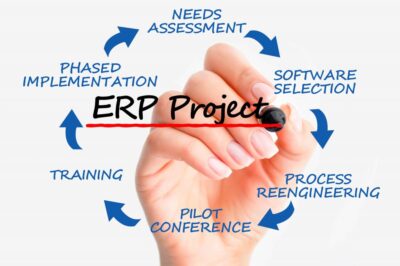
Evaluating an ERP (Enterprise Resource Planning) system is a critical process that requires careful consideration to ensure that the chosen solution meets your organization’s needs and objectives. Here’s a step-by-step guide on how to evaluate an ERP system:
- Define Your Requirements:
Start by documenting your organization’s specific requirements and objectives. What functionalities do you need the ERP system to have? What processes do you want it to streamline? This will serve as your baseline for evaluating potential ERP solutions. - Research ERP Providers:
Identify ERP providers that offer solutions that align with your requirements. Research their reputations, customer reviews, industry expertise, and track records. Shortlist a few providers that seem to be a good fit. - Request Information:
Reach out to the shortlisted ERP providers to request more information about their solutions. Ask for brochures, demos, feature lists, and case studies relevant to your industry. - Schedule Demos:
Arrange demos of the ERP systems with the providers. This will give you a hands-on experience of the software’s user interface, functionality, and ease of use. Make sure to involve key stakeholders from different departments in the demos. - Check Customization Options:
Inquire about the ERP system’s customization capabilities. Will it be able to adapt to your specific workflows and processes? Avoid solutions that require excessive customization, as they can lead to increased costs and complexity. - Scalability and Flexibility:
Consider whether the ERP system can scale with your business as it grows. You don’t want to outgrow the system too quickly. Look for solutions that offer modules or features you can add as needed. - Integration Capabilities:
Assess how well the ERP system can integrate with your existing software solutions, such as CRM, accounting, or e-commerce platforms. Seamless integration is essential for data consistency and operational efficiency. - Data Security and Compliance:
Inquire about the ERP system’s security measures, data encryption, and compliance with relevant industry standards and regulations (such as GDPR or HIPAA, depending on your industry). - Total Cost of Ownership (TCO):
Understand the complete cost of implementing and maintaining the ERP system. This includes licensing, implementation, customization, training, ongoing support, and any potential hidden costs. - Reference Checks:
Ask the ERP providers for references from organizations similar to yours that have implemented their systems. Contact these references to gather insights about their experience, challenges, and successes. - Vendor Support and Training:
Evaluate the vendor’s support services and training options. You want a provider that offers reliable customer support and comprehensive training for your staff. - Contract and SLAs:
Review the contract terms, including service-level agreements (SLAs), licensing terms, and any clauses related to data ownership, security, and exit strategy. - Compare and Analyze:
Compare the ERP solutions based on the criteria you’ve defined. Create a matrix or scorecard to objectively evaluate each system’s strengths and weaknesses. - Decision-Making:
Based on your evaluations, select the ERP system that best aligns with your organization’s needs, objectives, and budget. - Implementation Plan:
Once you’ve chosen an ERP system, work with the provider to create a detailed implementation plan. This plan should outline the timeline, responsibilities, and resources required for a successful implementation.
By following these steps, you can effectively evaluate ERP systems and choose the one that will help optimize your business processes and support your organization’s growth.